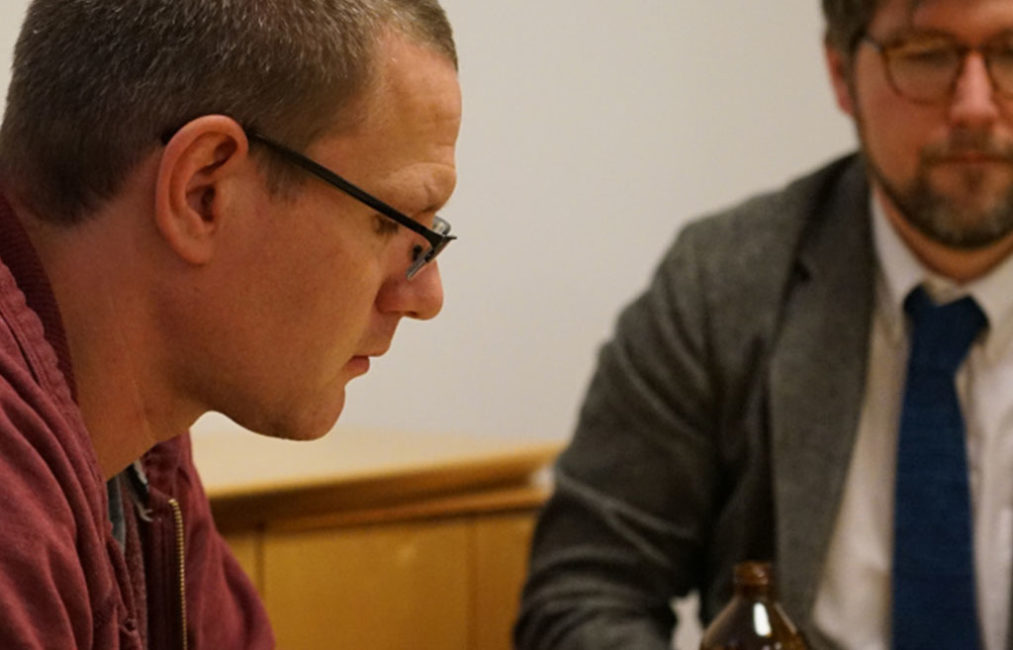People

Find members of the GAIMS team below! We are a diverse group collaborating from multiple departments and organizations on campus. If you are interested in getting involved please reach out to us.
Ingmar Riedel-Kruse is an assistant professor in the department of bioengineering. His lab combines basic research and engineering approaches by working on biophysics of multi-cellar systems and biotic games. Biotic games require biological process to run and could have a similar impact on society as conventional video games based on electronics. The lab develops biotic games specifically targeted at educational challenges and to support biomedical research. He usees theoretical / computational as well as experimental approaches based on molecular, cellular, developmental biology; zebrafish; imaging; physics; informatics / computer sciences; micro-fluidics; and engineering.
Henry Lowood is Curator for History of Science & Technology Collections and Film & Media Collections in the Stanford University Libraries. You can find him in the Humanities Research Group in Green Library, the Department known for the Lane Reading Room and a wonderful group of colleagues. Since 2000, he has headed How They Got Game: The History and Culture of Interactive Simulations and Videogames. Results of this project are courses such as History of Computer Game Design or The Consumer as Creator in Contemporary Media. The main focus of the project is the history and preservation of digital games, virtual worlds and interactive simulations as emerging new media forms.
Martha Russell’s background spans a range of business development, innovation and technology-transfer initiatives in information sciences, agriculture, communications, and information sciences. She studies the relational capital of innovation ecosystems using a data-driven network science approach. She helped build the identity of Poppin’ Fresh, one of the longest running celebrity avatars, and has competed in sand castle competitions with creations of Myst. With a focus on the power of shared vision, Russell has developed planning/evaluation systems and consulted regionally and internationally on technology innovation for regional development.
Paul Zenke works as the Academic Technology Lab Manager in The Office of the Vice Provost for Teaching and Learning (VPTL). He also co-organized Stanford’s 2014 Global Game Jam. Paul is passionate about advancing the role of games and learning at Stanford and is the Co-host of The First Draft podcast. Paul has worked as an instructional designer, technologist, and graduate assistant in three university libraries (Stanford University, University of Minnesota-Twin Cities, and University of Wisconsin-Madison).
Carlos Seligo is the ATS for The Program in Human Biology, supporting online learning in the Core and also individual faculty, primarily through the production of video and other media. In collaboration with the VPOL, he also created seven story videos for a MOOC offered through Stanford’s Online Learning edX in 2014 and several others intended for Stanford students in blended courses on campus.
Chris Bennett studies the intersection of game design (as a science), behavior design and design thinking, which he calls Game Design Thinking. Chris runs the Game Design Thinking research group inside of the Stanford Peace Innovation Lab, and comes from a twenty year background of designing and developing engaging video games in many mediums. Chris studies and practices ways to apply game design thinking to improving lives in the real world.
Jason A. Heppler is the Academic Technology Specialist in the Department of History at Stanford University. He spent two years as a project manager for the William F. Cody Archive at the Center for Digital Research in the Humanities. He has also developed his own digital history projects including Framing Red Power; The Buffalo Bill Project; and Buffalo Bill’s Wild West and the Progressive Image of American Indians.
Jamie Tsui is a Web Project Manager with Stanford Web Services. Previously, he was the producer for two successful educational games at Stanford School of Medicine: Septris and SICKO. Septris and SICKO are HTML5 web-based virtual patient simulator games, where Septris was designed to teach and improve sepsis identification and management, and SICKO was designed to assess surgical decision making. Jamie is interested in and also a proponent of gamification and learning analytics in education.
Rhiju Das focuses on the modeling and design of RNA molecules that carry out fundamental roles in biology and diseases including cancer and the flu. His Lab’s EteRNA project has crowd-sourced research in RNA nanotechnology to over a hundred thousand citizen scientists, integrating actual wet-lab feedback into a video game interface. He is currently an assistant professor in the departments of biochemistry and physics at Stanford.